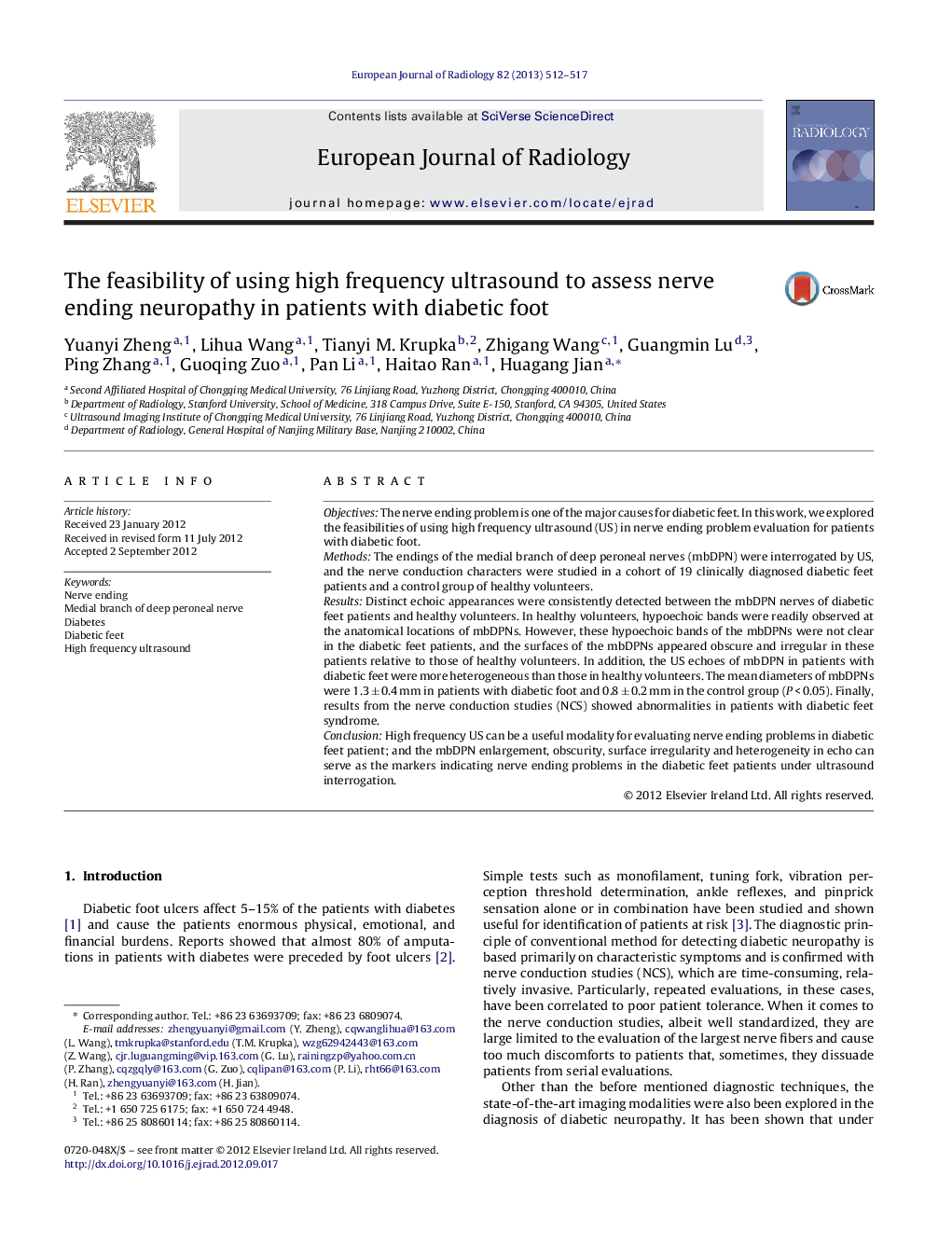| Article ID | Journal | Published Year | Pages | File Type |
|---|---|---|---|---|
| 4226019 | European Journal of Radiology | 2013 | 6 Pages |
ObjectivesThe nerve ending problem is one of the major causes for diabetic feet. In this work, we explored the feasibilities of using high frequency ultrasound (US) in nerve ending problem evaluation for patients with diabetic foot.MethodsThe endings of the medial branch of deep peroneal nerves (mbDPN) were interrogated by US, and the nerve conduction characters were studied in a cohort of 19 clinically diagnosed diabetic feet patients and a control group of healthy volunteers.ResultsDistinct echoic appearances were consistently detected between the mbDPN nerves of diabetic feet patients and healthy volunteers. In healthy volunteers, hypoechoic bands were readily observed at the anatomical locations of mbDPNs. However, these hypoechoic bands of the mbDPNs were not clear in the diabetic feet patients, and the surfaces of the mbDPNs appeared obscure and irregular in these patients relative to those of healthy volunteers. In addition, the US echoes of mbDPN in patients with diabetic feet were more heterogeneous than those in healthy volunteers. The mean diameters of mbDPNs were 1.3 ± 0.4 mm in patients with diabetic foot and 0.8 ± 0.2 mm in the control group (P < 0.05). Finally, results from the nerve conduction studies (NCS) showed abnormalities in patients with diabetic feet syndrome.ConclusionHigh frequency US can be a useful modality for evaluating nerve ending problems in diabetic feet patient; and the mbDPN enlargement, obscurity, surface irregularity and heterogeneity in echo can serve as the markers indicating nerve ending problems in the diabetic feet patients under ultrasound interrogation.
